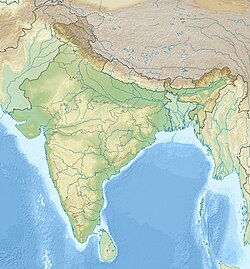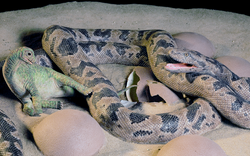| Lameta Formation | |
|---|---|
| Stratigraphic range: Maastrichtian ~ | |
 Exposure of the Lameta Formation at its type locality of Lameta | |
| Type | Geological formation |
| Underlies | Intertrappean Beds, Deccan Traps deposits |
| Overlies | Jabalpur Group or Precambrian Basement |
| Area | 5,000 km2 (1,900 sq mi) |
| Thickness | Variable, typically 18–45 m (59–148 ft) |
| Lithology | |
| Primary | Claystone, sandstone limestone |
| Other | Conglomerate |
| Location | |
| Coordinates | 23°12′N80°00′E / 23.2°N 80.0°E |
| Approximate paleocoordinates | 24°42′S63°12′E / 24.7°S 63.2°E |
| Region | Western India |
| Country | India |
| Extent | Madhya Pradesh, Gujarat, Maharashtra, Andhra Pradesh, Telangana |
| Type section | |
| Named for | Lameta Ghat |
The Lameta Formation, also known as the Infratrappean Beds (not to be confused with the contemporaneous Intertrappean Beds), is a sedimentary geological formation found in Madhya Pradesh, Gujarat, Maharashtra, Telangana, and Andhra Pradesh, India, associated with the Deccan Traps. [1] It is of the Maastrichtian age (Late Cretaceous), and is notable for its dinosaur fossils.










